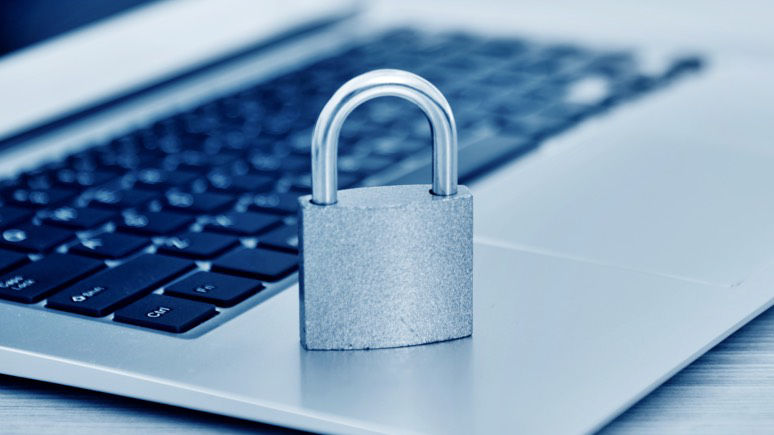Mar 18, 2016
How to prevent a computer virus from ruining your day
What happened the last time your PC was infected with a computer virus? Hopefully it didn’t completely wreck your day. But if it did, did you wish you had some practical ways to easily avoid a computer virus in the first place?
I’ve been there many times myself, staring blankly into the grey screen of a computer that won’t start up. Knowing that hours if not days and weeks will be used up restoring everything. Have you been there too? How could we avoid viruses altogether, or at the very least spot them early? And if the worst comes to pass, how can we get rid of computer viruses once we have them, and get back up and running as quickly as possible?
That’s what we’re looking at in this post.

Tips for preventing computer viruses
For a quick summary of how to prevent computer viruses from infecting your devices:
- Always have a backup. Should the worst happen, nothing can get you back up and running faster than having a backup of all your critical files & programs. Before anything else, ensure you have a regular backup system in place.
- Never download programs from untrusted sites. Viruses often get on your computer via an infected program. Always download software from the original supplier or a trusted third-party website.
- Be cautious when opening email attachments. Viruses can enter your system via a malicious email attachment. Often this is achieved by an email from a compromised contact that has fallen victim to a virus himself/herself.
- Disable image previews in your email client. Some viruses can be transmitted simply by previewing an email with infected images. Disable your email client’s image preview and only view images from trusted sources.
- Use an anti-malware solution. This software will look out for threats, remove any it finds, and provide you with the ability to run ad-hoc full system scans.
- Use a firewall. On the front line of defense, the firewall can block third parties from activating a virus on your computer.
- Regularly update your OS. All software, especially operating systems, require constant updates to protect your computer from the latest threats.
- Monitor all devices proactively. Viruses can spread quickly from computer to computer – monitor your devices to check for disabled firewalls, missing antivirus solutions, and OS updates.
- Utilize Administrator rights. Admin rights prevent changes being made without your knowledge by forcing an Admin password to be required any time a change is made.
- Pay attention to virus warnings and notifications. Your antivirus solution should provide you with notifications or warnings in one form or another. As soon as one appears, take it seriously, and take action.
- Inform your IT department. As soon as you suspect a computer virus infection inform your IT department so that they can nullify the threat before it spreads.
- Take care in removing the virus. A cautious yet thorough approach is more likely to effectively remove the virus from your computer’s system, whilst maintaining the integrity of your data and programs.
What Are Computer Viruses?
Before we get stuck into the details, let’s get a common understanding of what constitutes a computer virus:
A computer virus is a type of Malware (malicious software), designed to do one or more things to really tick you off.
What marks viruses apart from its other Malware buddies (such as Adware, Trojans, Ransomware, etc.) is that it acts exactly like a biological virus does. It replicates itself, infecting more areas of your computer’s system as it goes.
Computer viruses can fill up your computer’s usable space, slowing everything down to a halt. Or delete important files in such a way that they can be lost forever. Or even corrupt key components to render hardware useless. And that’s just the start of it.
Computer virus definition and examples
However, just like the common cold, computer viruses need human contact to spread. Often they hitch a ride into our system on the back of a different program. Sneaky little things.

The affected file might be a software tool, or even a document. But every time you run the infected program the virus attached to it will try to duplicate itself onto another program, before then carrying out its main damage. This is how it spreads through your system, through networks, or to friends and colleagues via email, among other ways. This is exactly how Rombertik propagated last year.
Rombertik strikes
Spreading via email from computer to computer, Rombertik created duplicates of itself before then setting about monitoring the user’s activities and sending data externally. The nasty kick in the tail was Rombertik’s ability to cause destruction as soon as it detected an analysis tool poking around. The result was either sending your computer into an endless reboot cycle, or permanently and irretrievably deleting vital files.
Nasty. And certain to ruin your day.
What kind of programs can viruses attach themselves to?
Think of it this way – any file you would normally run on your machine could have a virus attached. There are actually more than 50 potential file types just considering Windows machines. File types include:
- .exe (executable files)
- .com (executable file type originally used on MS-DOS)
- .bat (a batch file – containing a list of commands, originally used on MS-DOS)
- .cmd (similar in type and scope to the .bat file)
- .doc, .xls, .ppt (Microsoft Word, Excel and PowerPoint files can all contain harmful code in the form of macros)
However – all of these files require us to take an action. Such as double-clicking an .exe to run an installer. Or double-clicking to open up a Word document. If you’re not sure where a file has come from, think of it like a handrail on public transport – there might be all kinds of nasty germs living invisibly on it.
1. Always have a backup of core files and program
Plan ahead. Whilst it’s tempting to simply believe we can rely on some tactics to tackle viruses head-on – the pros seriously outweigh the cons when it comes to preparation for the worst. The absolute best way to avoid a computer virus ruining your day is to have a bulletproof fallback plan.
Should the worst come to pass and a virus reaches your computer and causes havoc, having a clean backup of all your most important files and programs is priceless.
Here are plenty of options out there to backup files locally to hardware or in the cloud – even ways to easily manage backups for multiple devices. When wiping your machine is the only option left to remove a stubborn virus, getting back up and running is quick and painless when you have a backup to hand.
There’s no excuse for not being prepared.
2. Never download programs from untrusted sites
Want to download a program you’re desperate to try out? Be careful to download it from the right place. Previously, when programs were only ever installed via CDs and DVDs, virus creators were blocked from attaching their viruses to the install files. Now that we download many of our programs online, virus creators can upload their infected program files in locations designed to look and feel like they are the genuine deal. Whenever possible, download install files via the approved channel – whether that is through the tool’s website, or via their third-party service such as Steam for gaming, or online stores such as the App Store. If the app you’re looking to download is only available from a third-party website, be very careful.
- The danger of freeware sites
Freeware sites have built a reputation as safe places to download free applications – however, the truth isn’t crystal clear.

This is because additional add-on software can be bundled into the download, and it can be very tricky to spot options to refuse to download these extras. While these add-ons aren’t necessarily viruses, they can often be classed as junk- or adware – which we’ll cover in a future post.
3. Be cautious when opening email attachments
Email viruses – the bane of IT Admins the world over. Unfortunately, although they have been around for many years, email viruses are still a very real threat.
The way it works is that you’ll receive an email from a known or unknown contact, normally with an innocuous file attachment, such as a Word Document. By downloading and opening the file, even for a split second, the macro virus within is given all the opportunity it needs to grab hold of the nearest program file in your system, from which it can launch its dastardly plans.
- Be 100% certain
Avoiding email viruses can most simply be achieved by never opening the email, or attachment if you are not 100% certain of its validity.
Received a randomly friendly email from a coworker with the subject line: “thought of you”? Be suspicious.
Or how about an email from an unknown but authoritative sounding company with an “invoice” attached to it? Don’t open it.
4. Disable image previews in your email client
Apart from taking care when opening attachments in emails, a great prevention tactic is to disable your email client’s auto-loading of images contained in emails. There’s some confusion as to whether images in emails can be malicious in themselves, but more commonly images loading in an email can contain tracking, which signals to the unscrupulous sender that you have opened one of their emails. Which can lead to them sending more emails to your inbox.
Additionally, Malware can appear to be image file attachments by hiding the file extension.
So what you see might be: cute-puppy.jpg
Is actually: cute-puppy.jpg.exe
And once opened and run, opens up doors to a virus.
Disable images from loading by default in your email client. When receiving emails from trusted sources there is always the option to download images ad-hoc.
5. Use an anti-malware solution
This might sound like a no-brainer, but running an antivirus/anti-malware solution on your machine at all times is absolutely essential. Catching viruses as early as possible is vital, as viruses, like their biological namesake, spread and mutate, increasing their damage and difficulty in removal. An anti-malware solution will isolate a compromised file by putting it into quarantine, effectively containing the virus and keeping it from spreading.
The tool you choose to use must receive regular updates (definitions), at best multiple times a day, to be up-to-date and to protect you from new threats. Also, it must be active at all times. Most good and reliable anti-malware solutions feature a real-time-scanner that acts like a guard and scans each file that is being accessed for potential threats.
6. Use a firewall
A firewall is your computers front line of defense against third party threats.
It stands in the way between an external person or program which attempts to interact with your computer in some way.

Whereas an antivirus program isolates and removes threats from files once they’re in contact with your computer, a firewall can prevent that file from reaching your computer in the first place.
7. Monitor all devices proactively
The firewall is up, anti-malware solution is in place, and your OS receives regular updates. Now make sure it stays like this.
Monitor your devices proactively, and be notified as soon as a firewall is disabled, or anti-malware solution is deactivated, or automatic OS updates are disabled. When you’re dealing with multiple devices, it can pay to ensure each one is completely protected. Protecting multiple computers from viruses can be easily achieved with a device monitoring tool. It will check all your PCs to identify any vulnerabilities, and provide an alert so you can react quickly.
8. Regularly update software
New viruses are being created all the time. In fact almost one million new threats are being created every day according to one report. Updating all your software regularly helps prevent viruses from causing you trouble because updates fix vulnerabilities to new threats. Updating Operating System software such as Windows, as well as antivirus software, will give you a great chance of evading a virus’s grasp.
9. Utilize Administrator rights
It can sometimes feel like a complete pain to have to enter an Administrator password any time you want to install or change settings on your computer. But there is method to this madness.
Many computer viruses can be stopped in their tracks because they do not have Administrator rights. Just as you need to enter a password to make changes, so does the virus. And without it, it’s unable to do anything. It’s worth having to go through that extra step yourself for the protection it provides.
10. Pay attention to virus warnings and notifications
Even the most scrupulous computer virus avoidance techniques can occasionally allow a virus to slip through the net. When that happens, there should be a number of things which cause an alarm bell to ring in your head. Pay attention to it!
The most obvious one being warnings and notifications popping up from your antivirus or Anti-Malware solution.
Never ignore these. Always take action. Immediately.
However, sometimes a big red flag won’t be jumping up and down on your screen. In which case, there are a few common symptoms you might notice.
What are common computer Virus symptoms?
How can we tell when our computer might have a virus? Unfortunately the list of possible symptoms is long and wide. But there are a few tell-tale symptoms of the most common types of viruses:
- Grinding to a halt: One way or another, a virus can cause your computer’s system to become agonizingly slow. Viruses can achieve this by ways of filling up disk space, or running multiple processes in the background.
- Programs becoming unresponsive or not working at all: Viruses can wreak havoc with program files if they are hell bent on corrupting your system. If a program you often use suddenly won’t start, or begins crashing – something is likely wrong, and a virus might be at fault.
- Disappearing files: Opened up a folder only to find all the contents missing? A virus may have deleted, corrupted or moved your files.
- Antivirus and Firewall disabling: Don’t remember turning off all your Virus and Internet protection? A virus might have been programmed to do so.
- Bizarre behavior: If your screen appears different, programs start speaking in a different language, or freezing you out of controlling anything – alarm bells should be ringing.
This list isn’t exhaustive, as each virus can display its own set of symptoms, but there are some common ones to watch out for.
11. Inform your IT department
Unfortunately viruses sometimes manage to squirm through the tightest of nets, and we’re left to chase after and remove them from our systems. When this happens, even if you’re not sure, always get in touch with your IT department. There are no stupid questions.

IT Admins hugely prefer the chance to catch early and nullify a threat rather than you tackling it yourself. Even if you think you can handle it yourself, it’s preferable to inform IT so they can make any changes to prevent it spreading, or to help your coworkers avoid a similar threat. Some viruses can even duplicate themselves within the network, leading to widespread infection, damage, and a lengthy cleanup process.
12. Take care in removing the virus
That being said, if your situation means that you will need to remove the virus yourself (if there’s no IT department, or your personal devices are infected for instance), there are a few steps you can take.
Step 1 – Safe Mode. Disconnect your PC from the network/internet to prevent the virus from spreading to other computers.
Then restart your computer into Safe Mode:
- For Windows press F8 as soon as you turn your PC back on – then select Safe Mode from the Advanced Boot Options.
- For Macs press Shift while turning on your computer. Release the key when you see the Apple logo and progress bar.
Step 2 – Full Scan. Once booted up, locate and run your antivirus program’s full system scan. This might take a while, but you don’t have to sit watching the progress bar crawl towards 100%.
Go off, do something else, and then come back.
Step 3 – Restart & Check. To completely remove any viruses the full scan has detected, it will often require a restart. Do this, and then reboot again into normal mode. Before reactivating network and internet connectivity, check that the problem has been resolved. Then check your Internet Security settings to make sure the virus hasn’t done any funny business with your default settings. Lastly, check your important files and documents to make sure there hasn’t been any corruption.
Step 4 – Backup or Carry On. If problems persist, you might want to consider wiping your computer, installing a fresh version of the operating system and using one of those handy backups of all your important files and data. (See – I told you it was essential!)
With any luck the problems won’t persist and your computer will now be virus-free.
Your day might have been a bit of a downer, but all’s well that ends well.